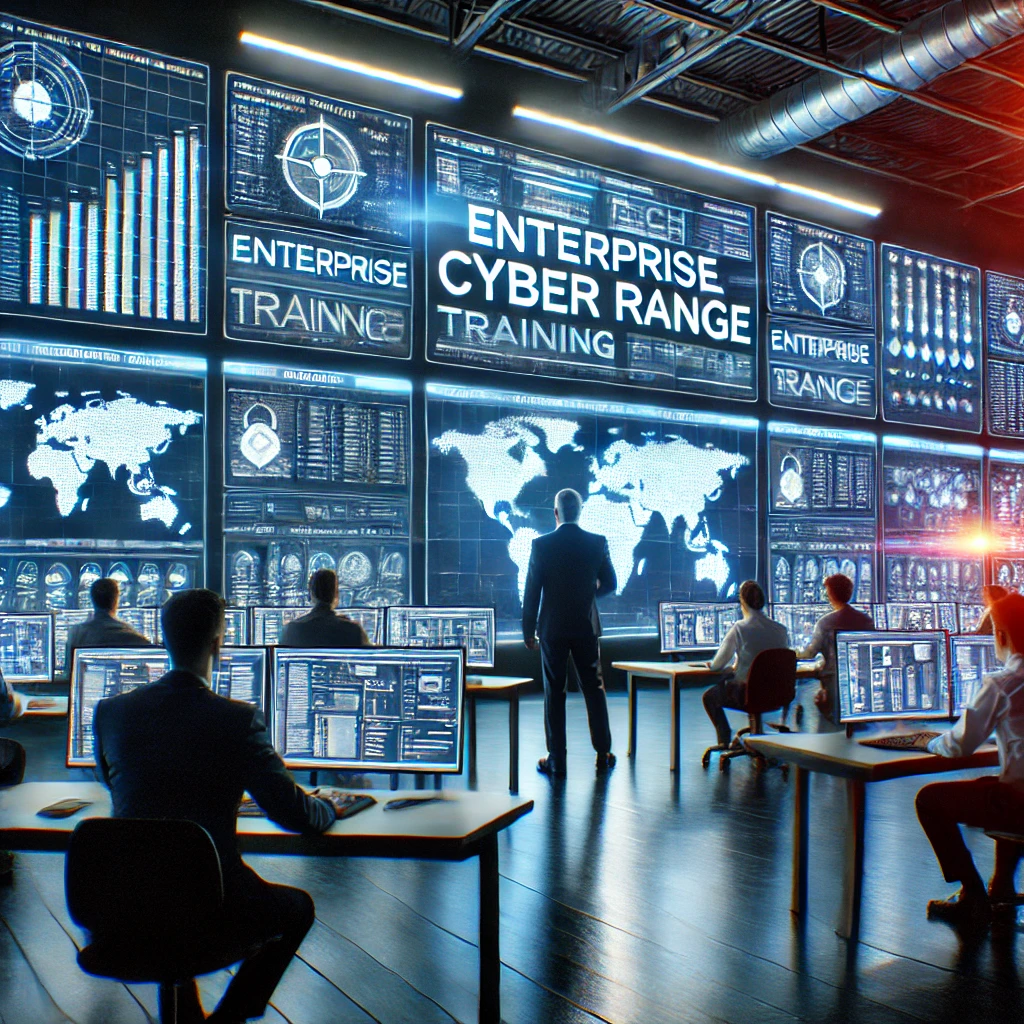Building Resilient Cybersecurity Teams with the Power of an Enterprise Cyber Range

In today’s digital age, organizations face increasingly complex and frequent cyber threats. From massive data breaches to fast-spreading ransomware attacks, the need for proactive and adaptive cybersecurity defenses has never been greater. At the core of this defense strategy lies the cybersecurity team—the frontline force responsible for identifying, mitigating, and responding to threats.
But in a threat landscape that evolves by the hour, how can organizations ensure their cybersecurity professionals remain sharp, agile, and ready? The answer lies in continuous training, real-time simulation, and technological adaptability. One of the most impactful tools enabling this transformation is the cyber range—a virtual environment designed to simulate realistic cyberattacks and train security teams to defend against them.
What Is a Cyber Range?
A cyber range is a controlled, sandboxed training environment that mirrors real-world IT infrastructures, including networks, applications, and endpoints. It enables cybersecurity professionals to respond to simulated cyber incidents—from basic intrusion attempts to complex multi-stage attacks—without the risk of damaging live systems.
Cyber ranges can be either on-premises or cloud-based and can replicate enterprise-level systems with great accuracy. With customizable attack scenarios and difficulty levels, they cater to everyone from entry-level security analysts to seasoned penetration testers. Some cyber ranges even include automated adversary emulation powered by AI to simulate real-world tactics, techniques, and procedures (TTPs) used by threat actors.
The Role of a Cyber Range in Building Resilience
In a world where cyberattacks are relentless and constantly evolving, resilience is no longer optional—it’s a necessity. A cyber range helps organizations build this resilience by offering:
1. Realistic, Hands-On Training
Cyber ranges go beyond textbook learning. They offer immersive, experiential learning where teams can engage in live-fire simulations of attacks such as ransomware outbreaks, insider threats, zero-day exploits, or supply chain compromises.
These practical experiences help security professionals hone their critical thinking, incident handling, and response coordination skills. Instead of learning passively, teams “learn by doing” in environments that mirror their real networks and attack surfaces.
2. Immediate Feedback and Post-Action Analysis
After each simulation, cyber range provides detailed performance metrics and after-action reviews. These reviews highlight:
- Response times
- Accuracy of threat identification
- Efficiency of communication
- Effectiveness of containment and recovery steps
This feedback loop helps refine both individual technical skills and team coordination, identifying gaps that may not surface during theoretical training. It also supports agile learning, allowing organizations to tailor follow-up training to address weaknesses quickly.
3. Stress Testing Security Protocols and Playbooks
Cyber ranges offer a safe space to test existing security protocols under pressure. Whether you’re validating an incident response plan or a disaster recovery strategy, simulations allow teams to uncover hidden flaws in procedures and make improvements before a real incident occurs.
This is especially useful in industries with strict regulatory requirements, such as healthcare, finance, and critical infrastructure, where compliance testing is essential.
4. Integrating Threat Intelligence and AI
Modern cyber ranges now integrate live threat intelligence feeds and AI-driven attack engines, making simulations more relevant and up-to-date. Organizations can replicate the latest threats from Advanced Persistent Threat (APT) groups, ransomware gangs, or nation-state actors to practice defending against emerging risks.
Additionally, cyber ranges are increasingly leveraging AI and machine learning to simulate dynamic adversary behavior, forcing defenders to adapt in real-time—just like they would during an actual cyber event.
5. Evaluating and Deploying New Tools
Cybersecurity stacks evolve rapidly. From next-gen firewalls and SOAR platforms to EDR and XDR tools, teams must be familiar with their usage and limitations. Cyber ranges provide a risk-free space to test new tools, evaluate their performance, and integrate them into your defense strategy.
This experimentation is especially crucial for DevSecOps teams, who need to understand how tools behave in CI/CD environments without disrupting production.
Fostering a Resilient Cybersecurity Culture
While cyber ranges are exceptional for technical skill development, long-term resilience depends on cultivating a cyber-aware culture across the organization.
- Cross-functional drills involving IT, communications, and executive teams can help improve decision-making during crises.
- Embedding cyber range exercises into routine workflows reinforces the message that cybersecurity is everyone’s responsibility.
- Regular simulations also improve cyber hygiene, reducing the likelihood of breaches caused by human error or misconfiguration.
Ultimately, a cyber range should be more than a training tool—it should be a strategic capability that reflects and strengthens your organization’s overall security posture.
Scaling and Customizing Training Across Teams
As organizations grow and IT environments diversify (including remote work, BYOD, and hybrid cloud), cybersecurity training must scale accordingly. Cyber ranges allow for:
- Role-based training for SOC analysts, red teamers, blue teamers, and IT administrators.
- Simultaneous multi-team participation to simulate cross-departmental coordination during incidents.
- Remote access, enabling geographically distributed teams to train together, which is particularly valuable in today’s hybrid workforce.
Advanced platforms also offer scenario automation and training analytics, making it easier for security leaders to assess readiness at scale and justify ROI on training investments.
Addressing New Trends: Zero Trust & Hybrid Cloud
Cyber ranges are adapting to reflect modern security paradigms like:
- Zero Trust Architecture (ZTA): Simulating scenarios where implicit trust is eliminated, and defenders must verify every user and device in real-time.
- Hybrid and Multi-cloud Environments: As businesses shift to platforms like AWS, Azure, and GCP, cyber ranges replicate these infrastructures to ensure teams can secure them effectively.
- Supply Chain Security: Simulations now include third-party compromise scenarios, helping organizations prepare for risks outside their immediate control.
Conclusion: A Smarter Approach to Cyber Readiness
Cyber threats are not slowing down. If anything, they’re becoming more automated, targeted, and destructive. Organizations must evolve beyond traditional classroom training and embrace immersive, scalable, and intelligence-driven approaches.
A cyber range does exactly that. It transforms how teams prepare, respond, and recover from attacks—while fostering a culture of continuous learning, collaboration, and readiness. In essence, it turns your cybersecurity team into a high-performance defense unit, ready not only to withstand today’s threats but also to anticipate and neutralize the threats of tomorrow.
Investing in a cyber range is not just about training—it’s about building a resilient, future-ready security force.

Essential Tips for Small Business Liability Protection

Best Tips and Tricks for Bitcoin Investments

Top Benefits of Hiring Professional Pet Sitting Services for Your Pets

Onsite Tire Change in Ottawa : Safe Fast & Professional Tire Services

Accelerating drug discovery through the DEL-ML-CS approach

Why Combining Technical SEO and AI Optimization Delivers Better Results

Digital Vehicle Inspection Software: The Most Effective Upgrade for Your Shop

Designing Your Workflow: Tailoring a CRM to Engineering Project Management








